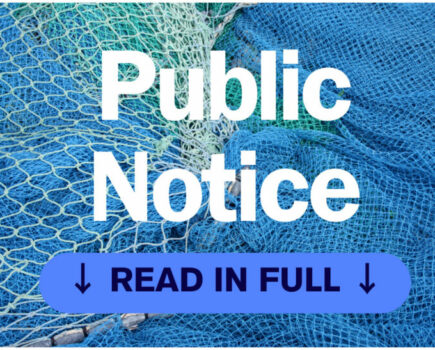On behalf of the Our Seas coalition, the national co-ordinator of the Scottish Creel Fishermen’s Federation sets out an alternative vision for Scottish inshore management
By Bally Philip
Highly Protected Marine Areas (HPMAs) have provoked recent outcry, but 40 years ago Scotland’s inshore fishermen faced a much bigger threat. For nearly 100 years, Scotland’s inshore fishing businesses had been safeguarded by a limit on bottom trawling within three miles of the shore. This protection had been demanded by fishermen in the 1880s, who recognised the value in looking after fish nursery and spawning grounds.

In 1984, after the mismanagement and consequent collapse of both the herring and inshore whitefish fisheries, commercial lobbying at Westminster sought to remove this ‘inshore limit’ to enable the exploitation of the last of our remaining inshore fish stocks, and to access new grounds to exploit inshore shellfish stocks. These areas were previously the lifeblood and last refuge of the small- scale inshore day-boat fleet.
At the stroke of a pen, 30% of Scotland’s inshore seas were opened up to industrial bottom trawling. Our inshore fishermen and many of our coastal communities have been paying the price ever since. Trawling in the late 1980s and 1990s quickly hoovered up the remaining inshore fish stocks. Then the fleet turned to trawling for shellfish, and in the process caught thousands of tonnes of juvenile fish as bycatch.
Owing to dwindling fish stocks and the growing power of bigger east coast ports, villages like Mallaig and Scalpay, once home to vibrant harbours reliant on herring and whitefish, entered into decline. Many fish populations have never recovered – a classic boom and bust. This all happened long before Marine Protected Areas were first mooted 15 years ago.
Despite government-commissioned studies showing that a reinstated inshore limit on trawling would yield more economic benefit for rural Scotland, creel and trawl boats are now forced to compete with each other over the same fishing grounds for the shellfish that remain.
The quality of political discourse around HPMAs has disturbingly ignored all this context. Headlines decrying HPMAs as risking the total destruction of the fishing industry and rural communities have focused the public debate about our fisheries as a battle between insensitive central- belt politicians and marine industries, which saw salmon farmers and fishermen united in defence of rural development and values.
The truth is, as ever, much more complex. Whilst many small-scale inshore fishermen had very legitimate concerns about the unacceptable uncertainty created by the government’s plans to ban all fishing in an unspecified 10% of Scotland’s seas, the campaign against HPMAs was in fact backed by some very deep commercial pockets.
By their own admission, Scottish Salmon, the politically well-connected lobbying force for the half-a-billion-pound farmed salmon export industry, and the Scottish Fishermen’s Federation ran a ‘concerted campaign’ against HPMAs. They now seem poised to naysay any future conservation measures. There are stark parallels here to the ongoing national debate on land reform, where the relationship between consolidated ownership and sustainability are often inverse. The fact is that despite Scotland’s seabed being effectively in public management via Crown Estate Scotland, parts of the Scottish fishing and aquaculture industry have enjoyed a high degree of influence and control over the use of Scotland’s seabed for the past 40 to 50 years. They have, despite the opportunity to revitalise our inshore fishing industry and recover our inshore ecosystems, fiercely resisted calls for the reinstatement of some form of inshore limit on bottom trawling and dredging.
One of the most telling responses to the HPMA consultation was the public concern that all fishing would be banned. Many people recognised the big difference between small- scale, low-impact creel and dive fishing boats and those larger, more industrial vessels that trawl the seabed and likely need to be regulated in some areas. Why ban them all?
Now that the threat of the poorly thought-out HPMA proposals has passed, it is time to have a sensible debate about the alternative options to reverse the decades of mismanagement that have already hollowed out much of our inshore fishing industry.
The Scottish Creel Fishermen’s Federation, which advocates for small-scale, low- impact and artisanal fisheries, stands alongside community and environmental organisations that want sustainability. None of these organisations want to see fishermen out of business; we want long-overdue measures to recover Scotland’s coastal fish populations and fisheries, joined up with rural development policy.
Arguably, local people and businesses most reliant on the resource, impacted by the management of, and living adjacent to, any inshore waters, should have more say than foreign companies and large-scale distant fishing interests that have the option of exploiting alternative areas. This is not an option available to our smaller-scale fishers and local communities.
Several studies from the likes of the New Economics Foundation, as well as from the Scottish government itself, show that preferential access for sustainable fishing through a reinstatement of some modern version of an inshore limit on industrial bottom trawling would generate net economic benefits. It could boost fish stocks, revitalise coastal communities and improve local food security in these globally challenging times. To make sure this works well for everyone will take effort and imagination on all sides.
But more than anything else, it will require the government to follow the science and the evidence, and escape the short- termist profit pattern of boom and bust that has beset our fisheries. Ecosystem resilience is in the long-term interests of small-scale inshore fishers and the coastal communities whose fortunes are inextricably tied to it.
This story was taken from the latest issue of Fishing News. For more up-to-date and in-depth reports on the UK and Irish commercial fishing sector, subscribe to Fishing News here or buy the latest single issue for just £3.30 here.
Sign up to Fishing News’ FREE e-newsletter here.








